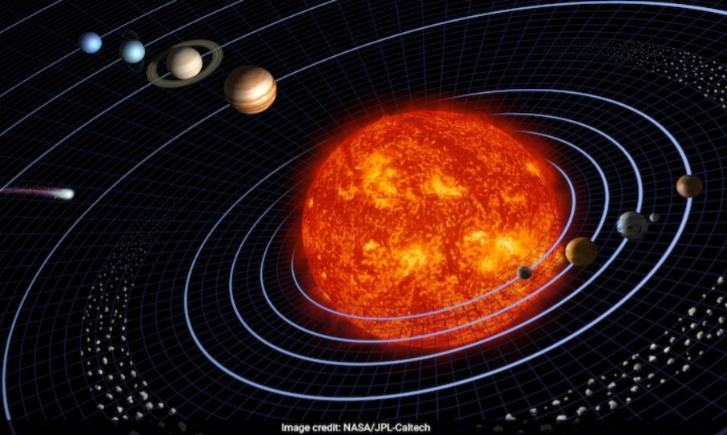A group of scientists has proposed that a massive interstellar object, potentially eight times the size of Jupiter, might have dramatically influenced the orbits of planets in our solar system. The study, currently published on the arXiv preprint database but not yet peer-reviewed, suggests that this celestial intruder passed close to where Mars orbits today, reshaping the paths of Jupiter, Saturn, Uranus, and Neptune.
For years, researchers have noted a discrepancy between the ideal concentric, planar arrangement of planetary orbits and their current three-dimensional orientations. To investigate, the team hypothesized that approximately four billion years ago, a star-sized object entered our solar system. They conducted 50,000 simulations over 20 million years, varying the visitor’s mass, velocity, and proximity to the Sun.
Their findings indicate that in about 1% of scenarios, the object’s gravitational influence could explain the current orbital patterns of the planets. According to the simulations, the interstellar visitor may have approached within 1.69 astronomical units (AU) of the Sun—just beyond Mars’ present orbit. Such proximity would have allowed its gravity to nudge the planets into new trajectories.
While previous theories attributed these irregularities to interactions among the planets themselves, this study posits that a one-time interstellar event may provide a more plausible explanation. The researchers also called for further investigation into the potential effects of such an encounter on minor planets in the asteroid belt and the trans-Neptunian region.
“We estimate that there is about a 1-in-100 chance that such a flyby produces a dynamical architecture similar to that of the solar system,” the researchers stated, adding that this encounter could account for the moderate eccentricities and inclinations observed in planetary orbits.
Let the Truth be known. If you read VB and like VB, please be a VB Supporter
and Help us deliver
the Truth to one and all.








